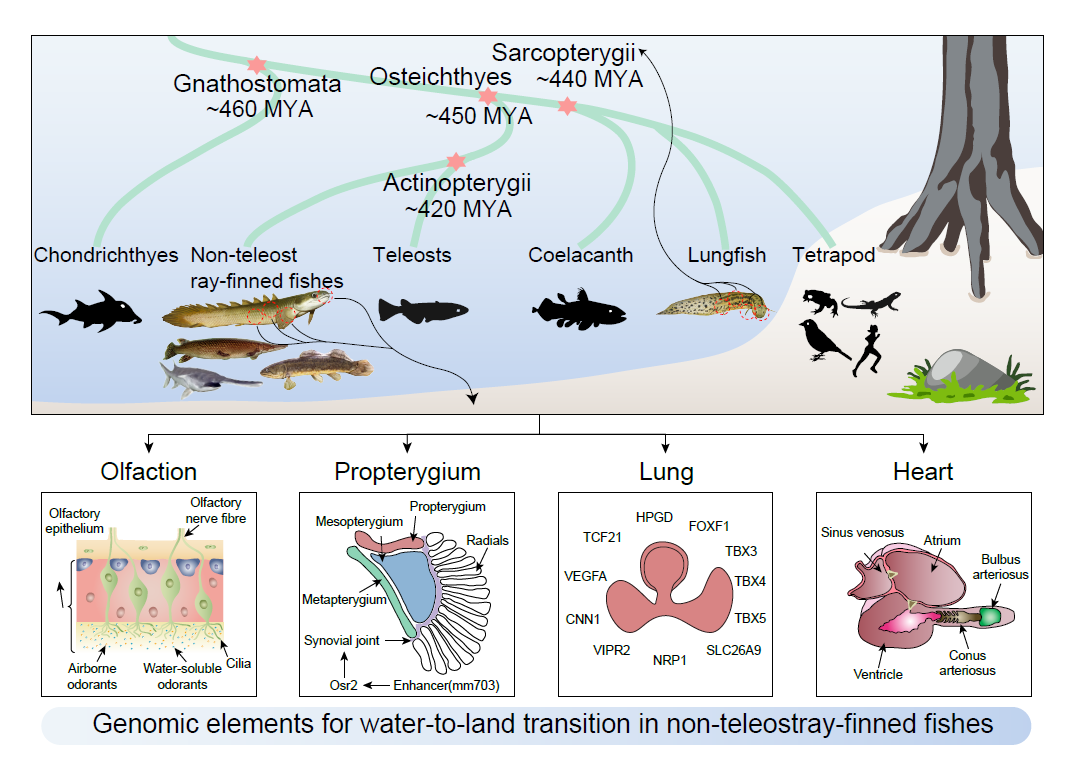Highlights
Non-Teleost Ray-Finned Fishes Exhibit Mosaic Genomic Features of Lobe- and Ray-finned Fishes
A collaborative research team led by Prof. HE Shunping from Institute of Hydrobiology (IHB) of Chinese Academy of Sciences has discovered through genome sequencing that the non-teleost ray-finned fishes - bichir, paddlefish, bowfin and alligator gar - exhibit mosaic genomic features of lobe- and ray-finned fishes. The study was published today in Cell.
Rich fossil evidence suggests that many traits and functions related to terrestrial evolution were present long before the ancestor of lobe- and ray-finned fishes. Therefore, investigation on the genomes of extant species from early divergent lineages of ray-finned fishes may illuminate the genetic regulatory processes underlying the trait evolution during the terrestrial transition.
The research team first produced a chromosome level assembly of the bichir (Polypterus senegalus), and draft genome assemblies for the American paddlefish (Polyodon spathula), the bowfin (Amia calva) and the alligator gar (Atractosteus spatula).
Through comparative genomic analyses, they found that early divergent lineages of ray-finned fishes exhibit many mosaic genomic features of lobe- and ray-finned fishes, particularly relating to regulatory elements for limb development.
By comparison transcriptomes from 355 samples representing 10 tissues of eight vertebrate species, they also confirmed that the lung and swim bladder are homologous organs, and discovered that functional lung-related genes are present in early ray-finned fishes.
In order to test the hypothesis that dominance of the conus arteriosus was an ancestral characteristic of the vertebrate cardiac outflow tract, they functionally validate the essential role of a jawed vertebrate highly conserved element for cardiovascular development. Results implied the ancestors of jawed vertebrates already had the potential gene-networks for cardio-respiratory system in supporting air breathing.
"These findings are of critical importance for our understanding of the water-to-land transition during vertebrate evolution," said Dr. YANG Liandong, co-author of the study.

(Credit: IHB)